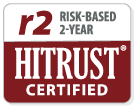Voices of Value is Curation Health’s Guest Writer Series that covers healthcare industry challenges and trends.
For this edition, we sat down for a Q&A with Trenor Williams, CEO and Co-Founder of Socially Determined, a technology company that provides Social Risk Intelligence™ solutions to organizations committed to addressing the Social Determinants of Health (SDOH) impacting their communities and populations. We discussed how the global pandemic has provided a front row seat into health disparities and inequities affecting communities across the U.S. and what can be done to tackle it effectively. Trenor also touched on the value of actionable data for physicians-like HCC capture and how getting a holistic view of social risk can empower clinicians to provide better holistic care coordination and drive better health outcomes for patients.
Q: The value of social determinants of health (SDOH) has been widely recognized, so there’s no doubt about their impact on health outcomes. But how do you, given you’re in this space, see it being adopted and married with value-based care?
A: It’s a great question. Long before SDOH was recognized, the idea – even if not called social determinants of health – has been part and parcel of public health for decades. Things started to shift about six or seven years ago to organizations trying to better understand how social risk and social determinants of health impact their business.
This migration went from a purely altruistic public health application to an integration of how you think about value-based care and population health. At the end of the day, SDOH and value-based care are inextricable. Any organization focused on whole-person care and improving outcomes needs to understand the social factors that influence a person’s health. It’s that simple.
One of the impacts of both the pandemic and social unrest over the last 18 months is that we have all gotten a front row seat and better view into social risk on vulnerable populations. The outsized role SDOH plays in health outcomes is clearer than ever before.
Q: As you know, at Curation Health, we talk a lot about clinical insights at the point of care — suspect HCC capture that can minimize the time and ask of physicians, so they have those insights at the point of care. What do you think about adding social elements to that? Do you think it’s an overburden on an already burdened physician population?
A: Yes, I do think it’s an overburden. When you’re thinking about addressing social risk, it’s important to keep a couple of things in mind. First, as a physician, I want to know if my diabetic patient is food insecure. That can fundamentally change how I position the conversation with them and potentially how I address their health.
I also want to make sure my team is set up for care management of that patient. This involves social workers and other team members to interpret and integrate social risk analytics into the work they do. It enables a better understanding of who’s at risk and allows them to start connecting patients to interventions that will drive real impact.
We think about the difference of being informed versus having to act. It’s valuable to inform physicians, but not expect them to always take action based on the information provided. I think there are lots of other ways within the healthcare ecosystem to address social risk and have other team members act on that information.
Q: Do you think the move from CMMI to increase a focus on SDOH and future models will drive more adoption?
A: Yes. Historically, if you look at CMS in general, including but not limited to CMMI, you’ll see that much of what happens in the healthcare industry stems from what goes on in CMS. CMMI has been evaluating and thinking about risk adjusted reimbursement, but it’s not limited to social risk analytics.
We’re also seeing CMS require Medicaid to take SDOH factors and networks into account at the federal level, and it is now being pushed down to state Medicaid offices.
Q: When it comes to SDOH data, is all data created equal?
A: The simple answer is no. There are several variables that can reduce the quality of datasets and subsequently negatively impact your risk analysis. At Socially Determined, we can quantify risk exposure for every community in the United States using a vast combination of federal, state and commercial datasets, and having access to accurate information for analysis is key. It is critical to establishing a realistic view of risk exposure based on the assets, attributes and resources in each community. When you’re quantifying risk based on where someone lives and their exposure to food insecurity, housing instability and economic climate, having credible data sources is incredibly important. The absence of updated, identified information can be detrimental to an organization’s SDOH initiatives.
We’ve found that health systems, health plans, government agencies and employers need a refined product. As such, we’re taking those raw data elements, running them through the algorithms developed by our data science team and creating curated Social Risk Intelligence™. This includes risk scores and process measures at a domain level around food, housing, transportation, health literacy and economics because it’s the actionable insight organizations need to address social risk at scale.
We can also quantify opportunities based on self-reported or EHR data, which could be social risk information depending on surveys or disease data, HCC and other sources. For example, we can confirm that the diabetic population within a cohort that struggles with food insecurity and health literacy will statistically have the worst outcomes. That data can then be used to inform an organization on where it should prioritize its efforts, and how to improve and refine their programs.
Q: How important do you think SDOH is for prospective risk adjustment for health plans?
A: We think it’s critical that health plans integrate social risk data with traditional clinical risk adjustment methodologies. Armed with this information, these health plans have full, whole-person visibility into a member or population to better anticipate and manage what’s going to happen down the line. We’ve found that health plans taking on risk and attempting to predict future activity – whether that’s utilization, costs or outcomes – need Social Risk Intelligence.
Q: Where do you see the adoption or use of SDOH in the next year/five years?
A: We partner with a variety of provider organizations, including IDNs and health plans, and we’re seeing increased SDOH adoption on a monthly basis. Every health plan I know has an ongoing social risk program of some sort, and government agencies are looking at social risk to support members and programs across their states or at a federal level. Life science companies are also interested in determining how to leverage this information in clinical trials, both for diversity and retention, as well as their commercial products and therapeutic areas where risk is inhibiting adherence. As they are deploying capital, foundations are searching for organizations that can help measure impact for the social programs they’ve implemented. The wonderful thing is we have every aspect of healthcare leaning in around social risk and Social Risk Intelligence trying to gain greater visibility. We are fortunate to be able to support the broader healthcare ecosystem with that work.
Q: What are the ideal steps an organization should take if they want to integrate SDOH into their strategy?
A: The first is to identify and characterize risk. You need to be able to look at food insecurity, housing instability, transportation barriers, financial strain and health literacy to develop an accurate understanding of what’s going on in a given community and for a given population.
The second is having the ability to quantify those opportunities by combining socioeconomic information with claims data. This allows you to see where social risk is having a real impact on business metrics and patient outcomes.
Third is to prioritize community and organizational action. Population need will always exceed the resources a community or organization has at its disposal; therefore it is imperative to use the data to inform decision making and implement programs that will have the greatest impact on a person and a population.
And finally, you must effectively and objectively measure and evaluate those intervention programs. While this has historically been one of the most difficult steps to take, it is the only way for an organization to determine the success of an initiative and how to scale it moving forward.
What’s fascinating to us is that everyone in the healthcare space now not only understands the clinical impact of the social determinants of health, but they’re starting to think about the affect social risk has on their business – specifically as it relates to value-based care. In fact, it doesn’t make sense to ignore SDOH if you’re taking financial risk on a population.

